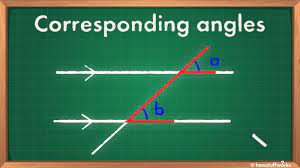What Is Enhanced Data Rate Definition?
Data rate definition (DRD) is a technology that allows devices to communicate at a higher data rate than the standard transmission rate. In other words, it allows for increased throughput of data between devices. This is particularly important in industries where speed is essential, such as telecommunications and health care. While many people are familiar with higher-speed Internet connections, few know about DRD.
What is Enhanced Data Rate Definition?
Enhanced Data Rate Definition (EDR) is a new modulation technique that can increase data transmission speeds over existing wireless networks. EDR allows more bits to be transmitted per second, resulting in faster file downloads, online gaming, and other high-bandwidth activities.
The benefits of EDR depend on the specific application. For example, online gaming may see a dramatic improvement in performance when using EDR because the increased bandwidth can allow for more detailed graphics and faster game play. On the other hand, file downloads may see minor gains or no change at all with EDR enabled.
There are a few things you need to keep in mind if you plan to use EDR on your network: first, your devices need to be able to support it; secondly, your network infrastructure must be able to handle the additional traffic; and finally, you will likely need to purchase new equipment or upgrade your existing ones in order to take advantage of this technology.
What are the benefits of EDR?
Enhanced data rate definition (EDR) is a new standard for wireless communication that can improve the performance of wireless networks. EDR allows wireless devices to communicate at a higher speed than current technology, which can improve connection speeds and reduce latency. Additionally, EDR can help prevent interference and allow for greater throughput.
How does EDR work?
Enhanced Data Rate Definition (EDR) is a modulation technique that can be used to increase the data rate of a wireless communication system. EDR uses a higher frequency band than traditional technologies, which allows for more data to be transmitted in a given time frame. This allows systems to transmit more information in less time, which can provide benefits such as improved performance and lower latency.
What are the two types of EDR?
Enhanced data rate (EDR) is a signaling protocol for high-speed digital communication. It allows for multiple streams of data to be transmitted over a single communication channel. EDR is used in 4G, 5G, and beyond cellular networks.
EDR defines a new type of communication channel which can carry multiple streams of data at the same time. This allows for higher throughput and reduced latency when transmitting large files or videos. EDR also enhances mobile broadband experiences by providing more consistent connections across LTE networks.
What are the benefits of using EDR?
Enhanced Data Rate Definition (EDR) is a communication standard used in 4G and next-generation wireless networks. EDR provides benefits such as higher throughput, reduced latency, and improved Quality of Service (QoS). These benefits can help businesses improve their performance and efficiency while communicating with customers or partners.
EDR also enables the use of new technologies such as Ultra-Wideband (UWB) and Machine-Type Communications (MTC). UWB is a type of wireless technology that can transmit data at frequencies up to 10 GHz. MTC is a technology that uses low-power radio signals to communicate between devices on a network. This allows for devices to be small and lightweight, which can be beneficial for wearable devices or embedded devices.




